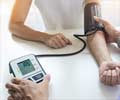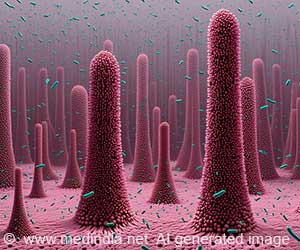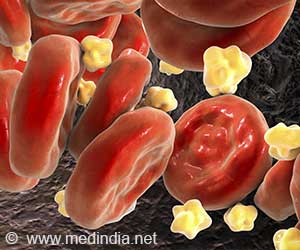New smartphone app helps people with high blood pressure (hypertension) and diabetes to monitor their blood pressure remotely. The app also gives suitable health tips and access to health coaches to improve blood pressure control.
- New smartphone App helps people with high blood pressure and diabetes to monitor their blood pressure (BP) and receive health tips as well as be connected to a health coach for better control of these parameters
- Patients with both hypertension and diabetes have a fourfold increased risk of heart attack, kidney disease, and stroke compared to those with only one of these conditions
- Participants showed an average reduction in systolic blood pressure (the top reading) by 5.4 mm Hg and diastolic pressure (the lower reading) by 3.5 mm Hg following six weeks of using the smartphone app
TOP INSIGHT
New smartphone app can help people with high blood pressure (hypertension) and diabetes to monitor their blood pressure remotely. The app also gives suitable health tips such as maintaining a healthy lifestyle and reminding them to take medications in order to improve blood pressure control and reduce associated health risk.
Read More..
Testing the Efficacy of Smartphone App in Blood Pressure Control
Earlier studies have shown that making suitable lifestyle modifications and home blood pressure monitoring, also known as self-measured blood pressure monitoring can help improve blood pressure control. The study team hoped to determine whether the Livongo’s smartphone app can help achieve significant blood pressure control in people with both hypertension and diabetes.The primary endpoint goal was a decrease in systolic blood pressure after six weeks. The secondary endpoint measured was a reduction of diastolic blood pressure in the same period.
- The study enrolled 708 participants at an average age of 54 years, and 53 percent of them were women
- At the onset of the study, all participants were diagnosed with diabetes, and 63 percent had blood pressure greater than 130/80 mm Hg, which is the cut-off for the diagnosis of stage 1 hypertension, according to the revised guideline published by ACC and the American Heart Association (AHA) in 2017
- A small subset of patients (28.7 percent) had blood pressure readings greater than 140/90 mm Hg, the cut-off for stage 2 high blood pressure, according to ACC/AHA guidelines
- The study participants were given a blood pressure monitor and cuff that they could connect wirelessly with Livongo's smartphone app
- When the patients checked their blood pressure (on an average 4 times per week) with their smartphones nearby, the recordings were automatically transmitted to Livongo's computer servers
- After recording their blood pressure, the participants could open the app to view the results while they got tips on ways to manage their blood pressure such as better diet choices, regular exercise, weight management and reminding them to take their medications
- The app also enabled them to look at the trend in blood pressure readings over time, share the results with family members, friends, their doctor and if needed fix up a call with a health coach
- At the end of the study in six weeks, almost 40.8 percent of patients had blood pressure values less than 130/80 mm Hg, while 23.6 percent of participants still had blood pressure more than 140/90 mm Hg
"We have shown in this pilot study that, in a population with both diabetes and high blood pressure, six weeks of remote blood pressure monitoring--accompanied by education about high blood pressure management and access to health coaches--can significantly improve blood pressure control," Shah said. "The improvement is comparable to what doctors would expect to see if a patient had started taking a low to moderate dose of a high blood pressure medication."
Future Plans
A potential limitation of the current study is that it did not include a control group that received standard care for hypertension as a comparison.Shah and his team his colleague plan to undertake a further randomized trial in which patients are randomly assigned to either standard hypertension care or the smartphone app intervention.
Health Risks Associated with Concomitant Hypertension and Diabetes
It is estimated that 50 percent of adults in the US have hypertension and only 54 percent of them have proper control of their blood pressure. It is common for patients with hypertension to also have concomitant diabetes. Occurrence of these two conditions together increases the risk of heart disease, kidney disease or stroke by four times compared to persons with only one of these conditions.Summary
The findings of the study indicate that a holistic approach combining remote blood pressure monitoring and provision of health tips can have a significant beneficial effect on blood pressure control. Hence, the findings of the study have to be validated in further trials.Reference:
- Remote Monitoring of Blood Pressure in T2D Population Decreases Systolic Blood Pressure at 6 Weeks: A Pilot Study - (https://www.acc.org/education-and-meetings/meetings/meeting-items/2018/03/12/13/48/acc19-68th-annual-scientific-session-and-expo)
 MEDINDIA
MEDINDIA



 Email
Email










